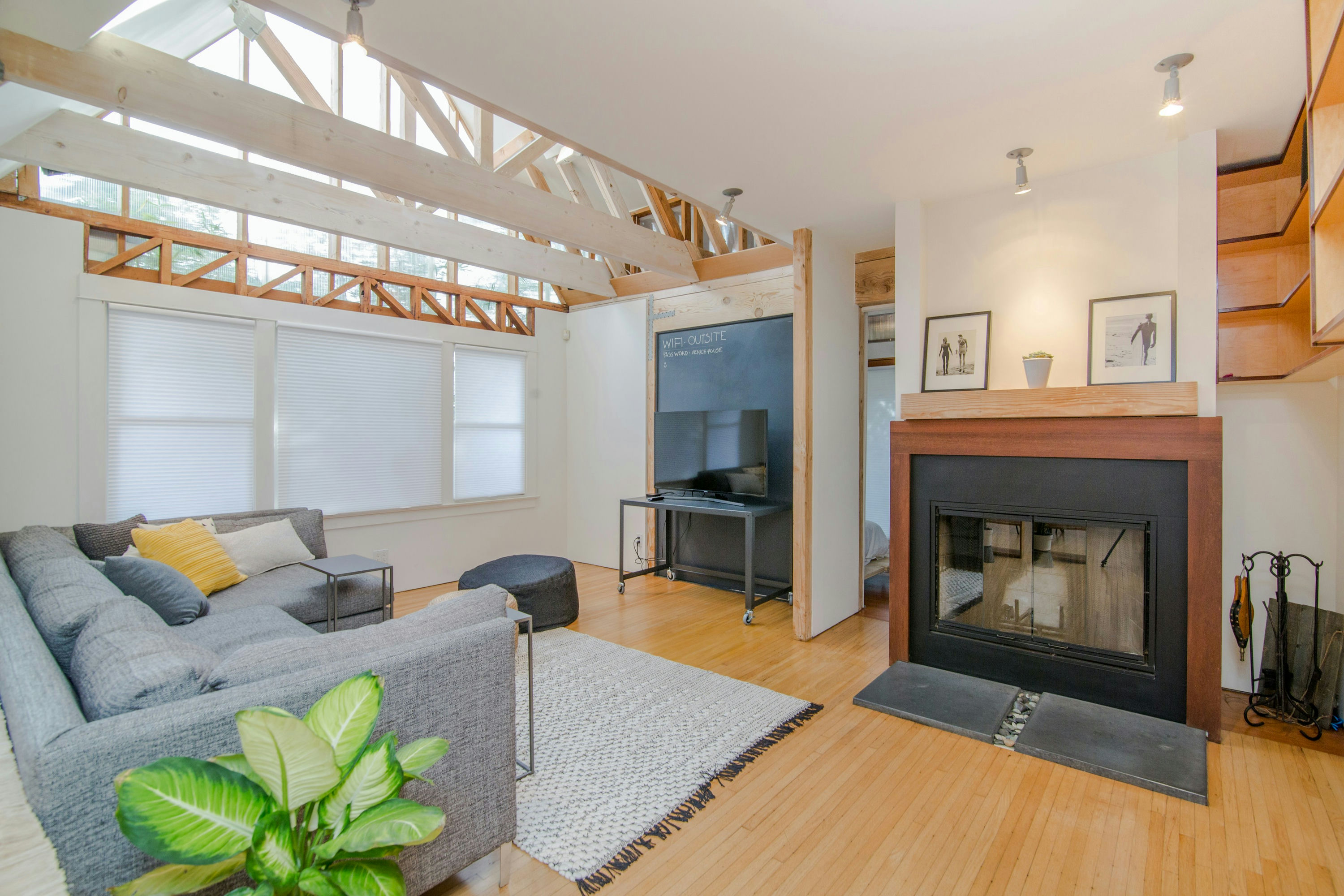Electrifying Your DIY Journey: A Homeowner’s Guide to Electrical Mastery
Introduction
Has there ever been a moment when you, as a bright-eyed newcomer to the world of property ownership, thought that you’d bitten off more than you could chew? Have you ever stood in the center of your new home, swathed in the harsh fluorescent light of a bulb blinking its last, and wondered, ‘How on earth am I going to fix this?’ Well, welcome, intrepid homeowner. It’s time to shed some light on that bewitching, befuddling beast: the electric system that powers our homes.
In an era where ‘DIY’ has moved from being a mere trend to virtually a lifestyle mantra for many, it’s never been more apt to familiarize oneself with the basics of home improvement – particularly, electrical repair skills. We’ve observed how popular TV shows celebrate the grit and glamour of making, remodelling, and repairing. Indeed, these DIY experiences can be both empowering and save costs; that is if you don’t end up fusing your entire block’s power grid in the process.
In the upcoming sections, we will zap into the nuts and bolts of your home’s electrical system, demystifying the various components and their function. You’ll be electrified to discover the vibrant world that lives behind your light switches and electrical outlets. As homeowners are increasingly exploring smart homes, underscoring the importance of electric literacy is paramount, much like learning a new language before embarking on a trip to foreign lands.
Our exploration will further venture into the realm of essential electrical tools. An artist is only as good as their brushes – or so they say. This sentiment holds true for anyone venturing into the land of DIY electrical work. Your toolkit is your trusty sidekick, and understanding how to choose quality tools is pivotal to your journey.
Like all great adventures, ours will not be exempt from peril. In the electrical world, danger lurks if you’re inadequately prepared with safety knowledge. Fear not, for we’ll guide you through precautions that will make sure your DIY endeavour doesn’t end in a shocking surprise.
We promise to empower you with confidence when tackling common household electrical tasks, from the dimly daunting task of changing a light bulb to the challenging quest of installing a light fixture, or dare we say it, replacing an elusive switch.
And then there are times when you’re faced with tasks that require the superhero-like skills – or rather, the knowledge and experience – of a professional electrician. In such instances, we’ll help you decipher when to relinquish your DIY badge (temporarily, we’re sure) and hire a professional.
In this age of digital renaissance, we’ll also point you towards some useful online resources to support your newfound passion. The internet is an open book of expert advice and video tutorials to guide your DIY electrical work and enhance your homeowner journey.
So, uncross those wires of doubt and prepare yourself for an electrifying foray into the brightest corners of homeowner DIY. Strap on your tool belt, pick up your tape measure, and let’s unlock the venerated lore of electrical competence together. We trust that the light at the end of the tunnel is a LED one!
Understanding Your Home’s Electrical System
When we flip a switch, we often take for granted the marvel that is electricity. After all, what’s all the fuss about a few lights turning on and off, right? But the intricate ballet of electrons that pirouettes quietly behind those plastered walls of your home can be intriguing, not to mention essential to understand if you’re a DIY-spirited homeowner.
Let’s kick-off with the basics of your home’s electrical system. It’s usually made up of a main control centre, also known as the breaker box, that functions much like the body’s nervous system. It ‘controls’ the power flow and ensures electricity is distributed around your home in a safe and systematic manner.
The breaker box not only directs electricity but diligently keeps our homes from randomly bursting into a light show like a malfunctioned Christmas tree. That’s because it houses circuit breakers or fuses which are designed to ‘trip’ or ‘blow’ when a circuit is overloaded, protecting your home from potential electrical fires. Just imagine it, doing its thing, like a diligent bodyguard, 24/7. Talk about an underappreciated hero.
Knowing the layout of your home’s electrical network isn’t just for showing off at cocktail parties. It’s critically important for times when you may need to shut off the power to specific areas of your home during minor repairs or to troubleshoot an issue. Just like knowing your way around a new city, understanding your home’s electrical system gets you from point A to point B without a hitch.
Speaking of getting from point A to B, let us dive into the future that is now – smart homes. There’s a renaissance of gadgets swooping into our homes, from app-controlled thermostats to voice-activated assistants that can tell us if it’s going to rain cats and dogs tomorrow. This implies some sophistication beyond the plain old wiring. Clever, isn’t it?
However, with great sophistication comes great responsibility. Because of the complexity of many smart home systems, having some knowledge of electrical basics will be critical to ensuring you can navigate this brave new world of home automation safely and effectively.
Remember – knowledge is power. And in this case, it could literally help prevent a hair-raising, electrifying encounter. Just imagine the stories you could tell then!
Essential Electrical Tools for Homeowners
Power to the people, indeed. And we’re not talking about social revolutions or political upheavals; we’re talking about the electricity buzzing through your home, and the essential tools you need to master it. As a new, modern homeowner, it’s time you branded your symbol of independence. No, not a flag or emblem, but a set of essential electrical tools, the companions of DIY enthusiasts and the silent heroes of minor home repairs.
First things first, let’s unveil our esteemed lineup. The humble screwdriver, practical, efficient, and a dab hand at tightening and loosening screws. Essential in fixing a light switch or an outlet cover. Placed alongside is the voltage tester, whose sole purpose – and accomplishment – is to leave you shock-free by determining if a wire or device has power. Before delving into an electrical project, it’s always smart to consult with this faithful life- saving friend (Note: if the voltage tester indicates electricity, don’t second guess it, the voltage tester is never up for pranks).
Now comes the surprising entrant: the wire stripper, a multitasker which not only strips wire but also crimps connectors and cuts wire. Talk about multitasking! Next up is the lineman’s pliers – bulky, sturdy, and your most steadfast partner when it comes to gripping, twisting, or cutting wires. Hello, stronghold!
Lastly, every hero needs a cape, and a flashlight is an electrician’s equivalent. Shedding light in the darkest corners, it ensures your safety and helps you maintain the precision that electrical work requires.
Choosing quality tools is an investment, not an expense, in your electrical endeavors. Look out for screwdrivers with insulated handles, wire strippers with comfortable grips, and sturdy, durable lineman’s pliers. Also, know that multi-tools, those MacGyvers of the hardware world, are gaining popularity. While they offer the allure of convenience and compactness, relying solely on them could be a gamble. Hence, it’s wise to have a dedicated set of specialized tools, or have them alongside your versatile multi-tool, to safely accomplish your home electrical tasks.
This fun, empowering journey of understanding your home’s electrical system is animated by this charismatic cast of tools, transforming what might seem monotonous into an engaging adventure. Remember, just as a 🎩hat doesn’t make a 🧙wizard, a set of tools won’t make you an electrician (definitely not overnight). But equipped with this essential toolset, patience, and a thirst to learn, you will certainly be powered up for your DIY home electrical work. Always remember – safety first, adventure second. Stay electrified!
Basic Safety Measures and Precautions
Safety isn’t just a catchy slogan minted on poster boards – it’s the mortar that holds the bricks of the DIY house together (and in this case, we’re specifically referring to your actual house!). When dealing with electricity, that mortar turns into a critical fortress wall. Undeniably, delving into the realm of electricity can be electrifying (pun intended), but without due precautions, shocking (pun intended [again]), too. It is absolutely crucial to hammer home the importance of safety when working with electricity, and not to end up a ‘shocking’ statistic on the next annual report of DIY mishaps.
For the modern DIY enthusiast, the first rectitude on this safety serenade is turning off the power. This may seem painfully obvious — so obvious that we often treat it like the fine print at the end of a contract. Well, consider this your magnifying glass; always ensure the power is off before starting any electrical work. Trust us, it’s better to grope around, flashlight-mouthed for a few minutes than ending up with a “hair-raising” experience.
Many recent reports spotlight a significant rise in electrical accidents, conveniently timed with more homeowners undertaking DIY tasks. It’s hardly surprising that as more people fancy becoming the next DIY superhero, bare- chested and tool-belted, more people are affronting their unfriendly neighborhood nemesis, “Electrocutus.” However, donning the cape and cowl in the DIY realm doesn’t necessitate heroic, daredevil stunts. Instead, be “watt- wise” and you might avoid a shocking twist in your DIY tale.
Coming back to safety nets, it’s not only about turning off the power. That’s just the tip of the (non-conductive) iceberg. Other safety measures include but, of course, aren’t limited to: using insulated tools, donning rubber-soled footwear, cleverly using circuit breaker lockouts, and prioritising safety glasses over “cool” sunglasses.
Remember, it’s about enjoying the process of upskilling ourselves, becoming more self-reliant, and saving a few bucks – nothing in that definition mentions turning yourself into a human toaster. Take it easy, breakers before breakfast, remember to “off” before “on,” and stay safe as electricity is not to be underestimated. It’s more Zeus’s thunderbolt than a harmless sparkler on 4th of July!
Remember, in the realm of DIY electrics, safety is no accident – it’s a choice you make and a habit you deliberately cultivate. Keep that in mind, and you’re ready to stride confidently (and safely) into your next power-packed project. Good luck!
Basic Repairs and Installations
Dashing across the room with your arms flailing, attempting to catch a skipping, flickering light bulb before it decides to plunge you into darkness may seem like harmless fun, and while it can make you feel like you’re starring in your very own slapstick comedy, it might be time to step up to your homeowner duties and crack open the toolbox. Trust us, your night-time dance with the dining room light need not be a recurrent event.
First on your electrical rodeo list could very well be the basic, yet fundamental task of changing a light bulb. Heavens to Edison, even a curmudgeonly cartoon character could do this with their eyes closed, right? Don’t tell our lawyers we said that. Wait until the bulb has cooled down (safety first, capers later), unscrew the old bulb (lefty loosey, remember?) insert the new bulb (righty tighty), and voila! No more frenzied dances in the twilight. And for those willing to leap into the 21st century, considering LED alternatives is a bright idea that aligns with recent trends towards energy efficiency.
Moving onto slightly more complex tasks but maintaining the luminous theme, let’s talk light fixture installations. First, pat yourself on the back. Owning a home isn’t just about fixing leaky faucets and chasing away unwelcome squirrels. It also means you get to play interior designer. Swapping out old fixtures for stylish, modern ones can dramatically revamp your space, while also reflecting those oh-so-en-vogue real estate trends. Stay organised by keeping all components together, systematically connect the wires with the ones in your ceiling following manufacturer’s instructions, and always remember, your friendly power off switch needs to be in the ‘off’ position for this.
Last but certainly not least, let’s deal with that jittery switch causing light shows reminiscent of a haunted house. Replacing a temperamental switch offers another handy skillset in your homeowner repertoire. Again, switching off your power source is crucial. Remove the faceplate, disconnect the old switch, connect the new one, replace the faceplate, and keep those ghostly encounters at bay.
Remember, acquiring these basic electrical repair skills not only boosts homeowner confidence but provides assurance that if a party popper of a light bulb throws a wobbly, or a switch takes on a life of its own, your arsenal is more than ready. Stay tuned for our next lesson on demystifying the enigma that is that extra IKEA part. It’s all part of the joy of this grand homeowner adventure.
When to Call a Professional
Before we plunge into this section, let’s humor a universal truth: everyone loves a hero, especially one who saves the day with a booming voice and an array of impressive DIY skills. However, our DIY superhero sometimes needs to be reminded that not all villains are cut out for amateur sleuthing. In other words, certain electrical tasks are just too villainous (read: complicated and dangerous) and should be left to the professionals.
Look, we all enjoy occasionally sporting the proverbial cape and dashing off into the realm of DIY projects. Who can resist the lure of the significant savings on labor costs or the palpable satisfaction of having fixed or created something in your own home with your own hands? Undeniably, roller coasters of emotion and hard-won triumphs are all part and parcel of the DIY landscape.
However, there is also a line–a somewhat hazy, somewhat sparky line–between what an intrepid homeowner can safely manage and what circumstances call for summoning the cavalry, also known as a certified electrician. Dodging these calls can result in a nasty shock (literally and metaphorically), not to mention an exponentially ballooning home repair bill perspective. It’s like preferring to spar with a shark rather than let the seasoned shark handler handle the… well, shark–it just doesn’t make sense.
Consider tasks like replacing fuse boxes, upgrading electrical panels, installing new circuits, or resolving flickering lights due to voltage fluctuation. Erudite as you might be about electricity, these are not arenas for rookie experimentation. Your safety is paramount and trumping that rule may lead to a literal game of shocking roulette.
To add a salad of numbers to this, recent trends depict a rise in hiring professionals, triggered mostly by bruised egos and shorted circuits stemming from DIY mishaps. Yes, you read that right, whimsical homeowner DIY scenarios have ended in a comedy of errors, intensifying the spotlight on the importance of professional intervention, especially for complex electrical jobs.
Hence, while it may be true that the heroic path of DIY can be rewarding, it also requires discernment. Know when to hang up the cape and hand over the reins to a professional. After all, our DIY hero isn’t defined by the quickness with which they delve into an electrical project, but rather by the wisdom with which they approach it–knowing when to make that all-important call to bring in reinforcements.
Useful Online Resources for DIY Electrical Work
Let’s imagine, for a moment, that you’re holding a light bulb. You’ve successfully screwed it into place, but you’re not entirely sure how to proceed with wiring. Your heart beats like a drum kit under the hands of a zealous rockstar, drowned by the menacing silence. Okay, maybe that’s a little dramatic, but for the DIYers among us, our first bout with home electrical work can establish a budding love-hate relationship with breakers, wires, and fixtures.
Thank goodness that the digital age is, electrically speaking, current. Helpful how-tos are only a click away and this can be your reality, minus the drama. Online resources like video tutorials, forums, articles, and Q&A platforms provide a safe house of knowledge, where homeowners can salvage wisdom from experienced electricians, seasoned DIY pros, and fellow first- timers.
Platforms like YouTube and Reddit are particularly beneficial for those looking to unravel the mystery of their home’s electrical system. YouTube, for example, is a visual smorgasbord of instructional goodness featuring videos on everything from adjusting a pesky flickering light to installing a chandelier into a previously light-less area of your house. Facebook groups and other online communities can provide real-time feedback, so you’d be armed with an answer before you can say, “Honey, where’s the breaker box?”
Next up, websites such as DIY Network and This Old House offer articles and step-by-step guides written by experts. Think of them like three-star Michelin guidebooks for the electrical world; ready to navigate you along the circuits of your home.
Despite the sea of wisdom online, it’s crucial to remember that digital advice doesn’t replace professional expertise. In fact, several professionals frequent online forums to ensure that DIY does not become DI-why-did-I-do- that? So, while the Internet can be a treasure trove of information, it should be used judiciously, because the difference between an enlightened homeowner and a frazzled one can be a single click.
Overall, the rise in popularity of DIY projects in recent years has unveiled the potential that knowledge sharing and online communities can offer to keen homeowners. Various platforms have ushered in a new era of self-sufficiency among homeowners, not only supporting home improvement projects but also making them more enjoyable. So next time you find yourself puzzled by a tangle of wires, lean on the World Wide Web–it’s a great place to spark enlightenment.
Conclusion: Harnessing the Power, Responsibly
And so, we’ve journeyed together from a short spark in the relation of a new homeowner and their electrical system, tracing the circuits of understanding, the connection of tools, the switch of safety precautions, the bright insight into basic repairs and installations, and where in the breaker box to draw the line and call a professional. Marvelously, the journey doesn’t stop here, as we’ve also enlightened our way through valuable online resources that further bridge you with the world of DIY. Blending in a dash of wit, if we’ve sparked your interest just a tad and busted the mythical ‘monster behind the electricity,’ then we’ve hit our target with lightning precision.
Congrats, new homeowner, for stepping into the vibrant and dynamic world of becoming your own handyman – or should we say handyperson? – for all things electrical. Boning up on the nuts and bolts (excuse the pun) of your home’s electrical system is not only way cooler than it sounds, but it also empowers you to tackle minor repairs and improvements independently.
But before you dive headfirst into unattended electrical repairs armed with an unwavering spirit and a shiny new multi-tool, remember the golden words: safety first. Yes, DIY home improvement is the cat’s pajamas (or the LED’s lumens, in our case), but this doesn’t eliminate the inherent risks involved with electricity. A misstep can lead to shock value of the unwanted kind. So remember, if in doubt, don’t lug out the toolbox–lug out the phone. Calling a professional isn’t a defeat; it’s the smart play when the game gets too challenging.
Transitioning from the safety helmet to the wisdom cap, remember, the cyberspace realm is overflowing with recourses to learn from. Join the rising tide of DIY maestros who find camaraderie and assistance in online communities.
In short, you’ve got the power. But, like a superhero dealing with immense strength, it’s essential to know when to use it and when to call for reinforcements. So here’s to using your newfound knowledge, to light up your home and life, with your safety and wallet thanking you in the process. Unleash your inner electrician, and remember, there’s a ‘current’ of support online. Wishing you a positively shocking DIY journey without any ‘resistance.’ The floor is now yours, or should we say, the power is in your hands!









